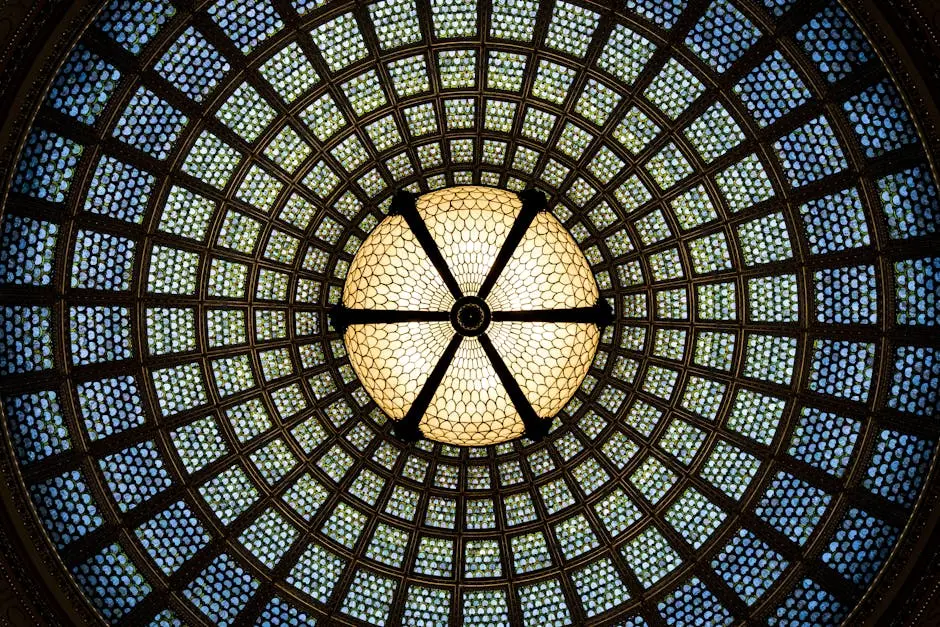Mood & Aesthetics: Chicago Residential Design Insights That Inspire
Dive into the captivating world of Chicago’s residential design, where mood and aesthetics seamlessly intertwine to create inspiring living spaces. From the city’s architectural heritage to modern design principles, discover the secrets behind creating a home that reflects your personality and lifestyle.
The Influence of Chicago’s Architectural Heritage
Chicago is renowned for its diverse architectural styles, which significantly influence residential designs across the city. From classic Prairie School homes to sleek modernist structures, the city’s architectural past is a treasure trove for inspiration. The influence of Frank Lloyd Wright’s Prairie Style is particularly notable, characterized by its horizontal lines and organic forms that harmonize with the flat Midwestern landscape. These principles continue to inform the design of many Chicago homes, emphasizing simplicity, craftsmanship, and functionality.
However, it’s not just the Prairie School that shapes the city’s residential aesthetic. The Chicago School of Architecture also plays a pivotal role, celebrated for its pioneering use of steel-frame construction and large plate glass windows. This legacy is evident in many contemporary homes, where open-plan spaces and industrial elements create a seamless blend of past and present. By acknowledging Chicago’s architectural history, homeowners can craft spaces that are not only functional and beautiful but also deeply connected to the city’s unique urban fabric.
The city’s rich tapestry of cultural influences also contributes to its diverse architectural landscape. Immigrant communities have brought their distinct styles and sensibilities, shaping residential areas with vibrant and eclectic touches. The Greystone Homes of Chicago are a prime example, showcasing unique stone facades that blend elements from Italianate and Romanesque Revival styles. This amalgamation of influences creates neighborhoods with a truly unique character, inviting homeowners to draw inspiration from their surroundings.
Understanding Mood in Residential Design
In interior design, ‘mood’ is an essential component that sets the emotional tone of a space. It encompasses elements like color, lighting, and texture. Learn how these factors contribute to creating different atmospheres in your home. Color, for instance, has a profound impact: blues and greens can evoke tranquility, while warmer tones like reds and yellows often inspire energy and warmth.
Lighting also plays a crucial role in setting the mood. Natural light is highly valued, as it enhances the sense of space and airiness within a home. Consider maximizing natural light by using sheer curtains or strategically placed mirrors to reflect light into dimmer areas. Additionally, artificial lighting should be layered, combining ambient, task, and accent lighting to create a dynamic yet balanced atmosphere for various activities and moods.
Texture is another potent element in mood creation. Incorporate a variety of materials, from soft textiles to rough-hewn woods, to add depth and interest to a room. A well-chosen rug or a textured wall covering can introduce warmth or sophistication, subtlety or drama. Pay attention to the tactile experience of a space, as it contributes significantly to its overall emotional impact.
Aesthetics: Finding Beauty in Function
Beautiful design isn’t just about looks; it’s about crafting spaces that work for you. Explore how form and function come together in Chicago homes to produce aesthetically pleasing yet functional living environments. The concept of open-plan living, for instance, has gained popularity for its ability to enhance social interaction and flexibility, a staple feature in many Chicago residences.
Aesthetic functionality is also evident in the use of multifunctional furniture. From extendable dining tables to sleeper sofas, choosing the right furniture can maximize space and usability without sacrificing style. This approach is particularly beneficial in urban settings, where space can be a premium.
Sustainability continues to shape the aesthetics of functional design. Incorporating eco-friendly materials such as reclaimed wood or recycled metal not only supports environmental responsibility but also brings unique character and charm to the home. These sustainable choices often have stories behind them, adding layers of meaning and connection to the design.
Incorporating Personal Touches into Your Design
Personalizing your space is key to making it truly yours. Discover strategies for infusing your home’s design with personal elements, ensuring it reflects your taste and lifestyle. Start with cherished items, such as family heirlooms, or display collections that tell your story, providing a personal narrative within your living space.
Consider incorporating artwork that speaks to you. Whether it’s a statement piece or a gallery wall, art can set the tone and create focal points within a room. Local artists or unique pieces can inspire creativity and add a singular character to your interior decor, serving as a conversation starter for you and your guests.
Don’t overlook the power of DIY projects to instill a sense of accomplishment and individuality in your design. Whether painting an accent wall or crafting a custom shelf, getting hands-on with your home decor can enhance your connection to the space. With a bit of creativity, even simple projects can transform everyday items into personalized design statements.
Embracing Modern Trends in Chicago Residential Design
Stay ahead of the curve by embracing modern design trends that are sweeping through Chicago’s residential landscape. Find out how to integrate contemporary elements while maintaining a timeless appeal. The resurgence of minimalism, for instance, emphasizes clean lines and uncluttered spaces, a trend that resonates with Chicago’s architectural ethos.
Biophilic design is another trend gaining momentum, focusing on creating calming environments by integrating natural elements into the home. Incorporating greenery not only enhances aesthetics but also improves air quality and overall well-being.
Technology is also transforming residential design, from smart home systems to energy-efficient appliances. These integrations offer greater convenience and sustainability, aligning with the modern emphasis on reducing environmental impact while enhancing daily life. Explore these innovations to bring cutting-edge advancements into your home, ensuring it remains efficient and future-proof.
Craft Your Inspired Chicago Home
Creating a residential design that not only looks beautiful but also feels right is an art that blends mood and aesthetics. By drawing inspiration from Chicago’s rich design landscape, homeowners can craft spaces that offer comfort, style, and a true sense of home.

